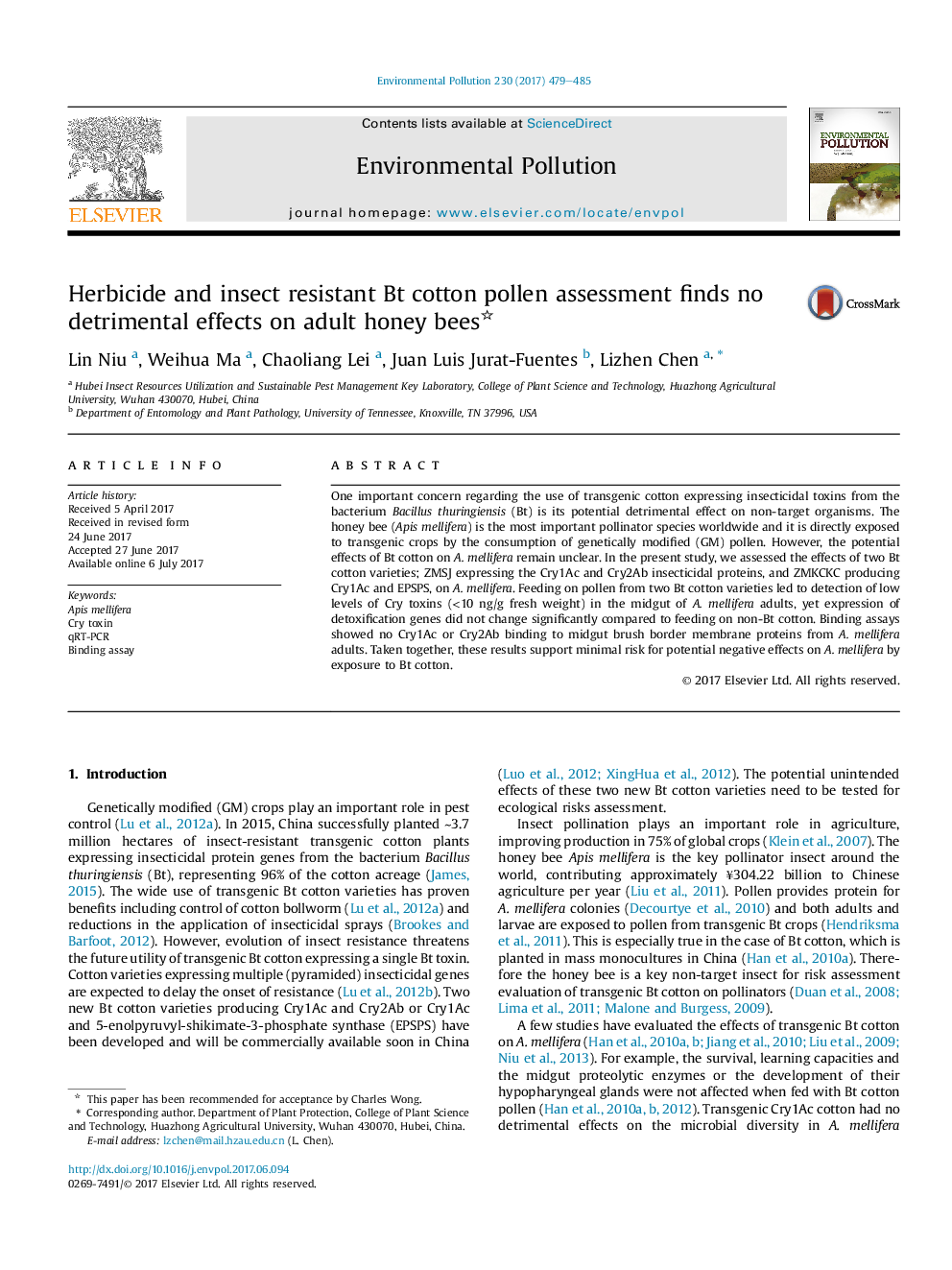| Article ID | Journal | Published Year | Pages | File Type |
|---|---|---|---|---|
| 5748694 | Environmental Pollution | 2017 | 7 Pages |
â¢A dietary exposure assay for evaluating the exposure of the honey bee Apis mellifera to Bt cotton pollen.â¢Cry1Ac/EPSPS or Cry1Ac/2Ab -containing cotton pollen does not affect expression of detoxification genes in A. mellifera.â¢No Cry1Ac or Cry2Ab binding protein was found in A. mellifera midgut.â¢Planting Cry1Ac/EPSPS or Cry1Ac/2Ab -expressing cotton will pose a negligible risk to A. mellifera.
One important concern regarding the use of transgenic cotton expressing insecticidal toxins from the bacterium Bacillus thuringiensis (Bt) is its potential detrimental effect on non-target organisms. The honey bee (Apis mellifera) is the most important pollinator species worldwide and it is directly exposed to transgenic crops by the consumption of genetically modified (GM) pollen. However, the potential effects of Bt cotton on A. mellifera remain unclear. In the present study, we assessed the effects of two Bt cotton varieties; ZMSJ expressing the Cry1Ac and Cry2Ab insecticidal proteins, and ZMKCKC producing Cry1Ac and EPSPS, on A. mellifera. Feeding on pollen from two Bt cotton varieties led to detection of low levels of Cry toxins (<10 ng/g fresh weight) in the midgut of A. mellifera adults, yet expression of detoxification genes did not change significantly compared to feeding on non-Bt cotton. Binding assays showed no Cry1Ac or Cry2Ab binding to midgut brush border membrane proteins from A. mellifera adults. Taken together, these results support minimal risk for potential negative effects on A. mellifera by exposure to Bt cotton.
Graphical abstractDownload high-res image (187KB)Download full-size image
